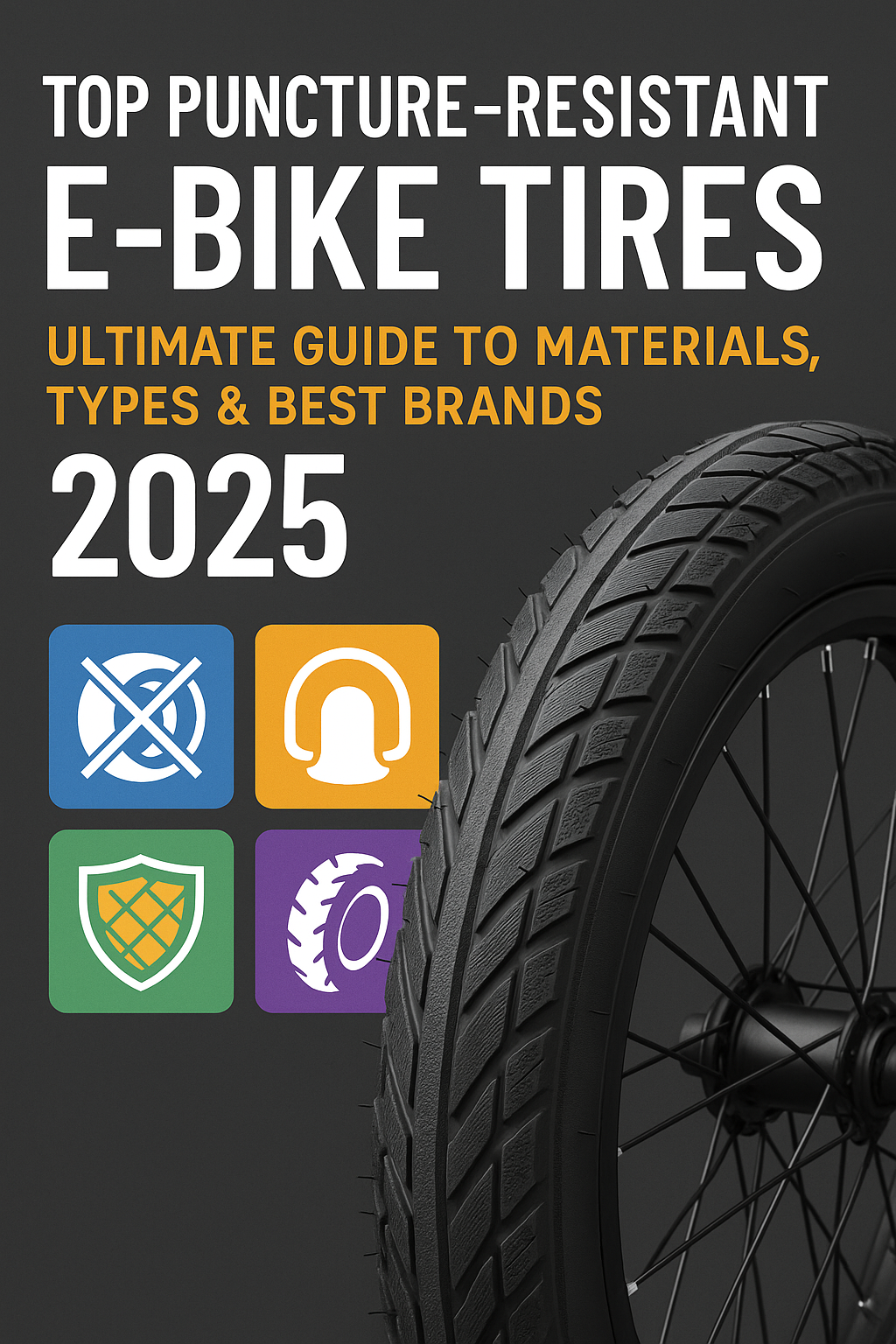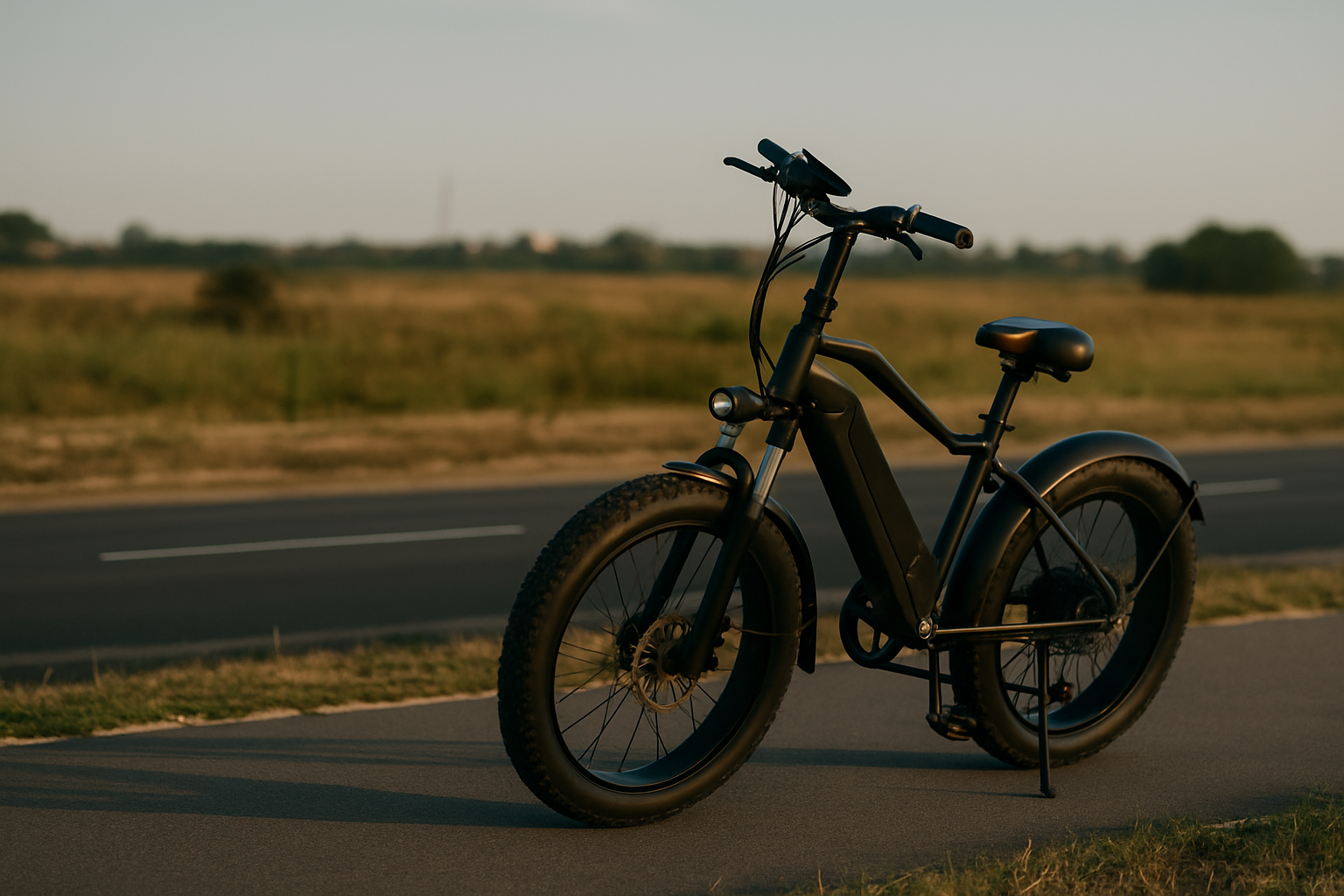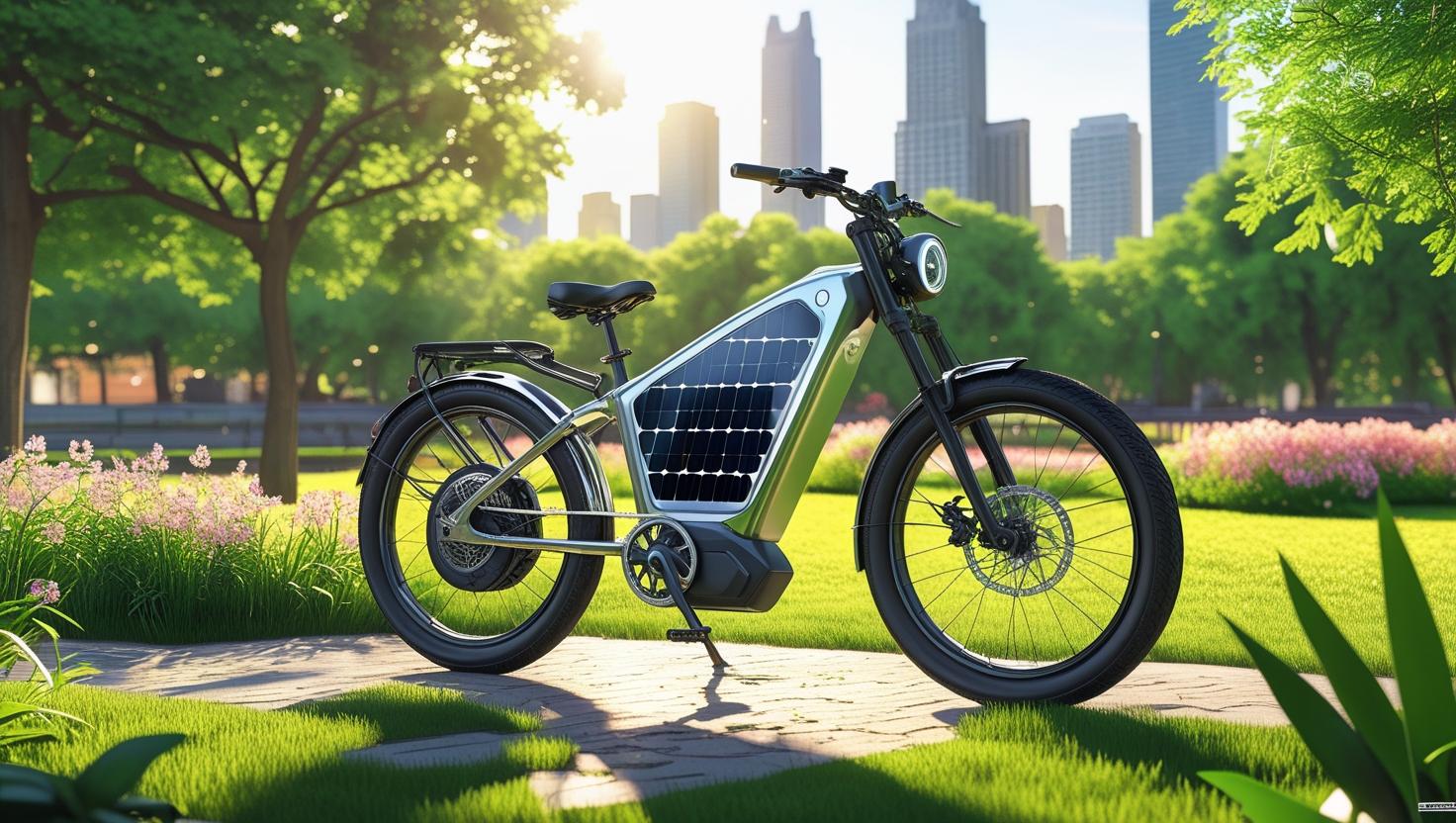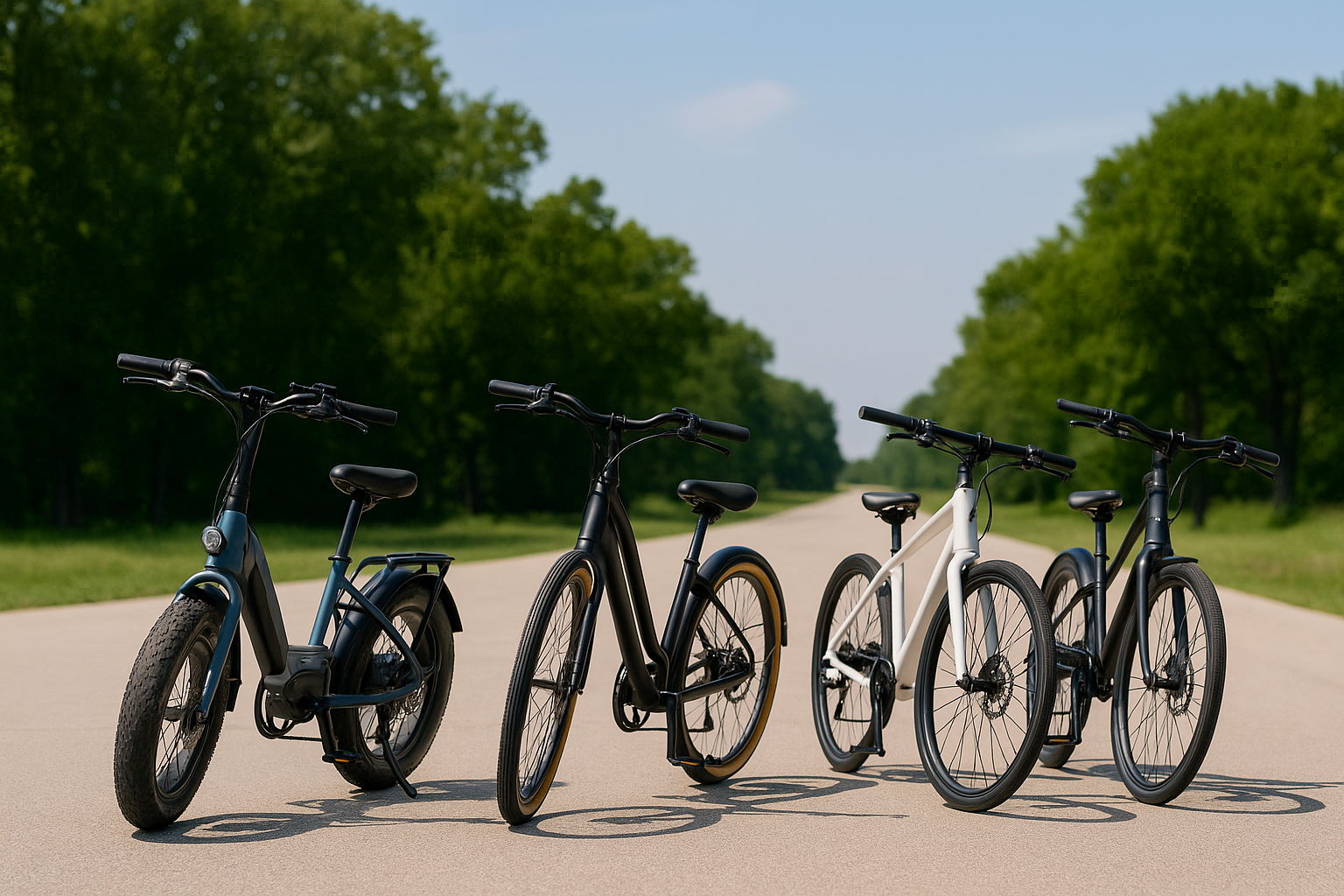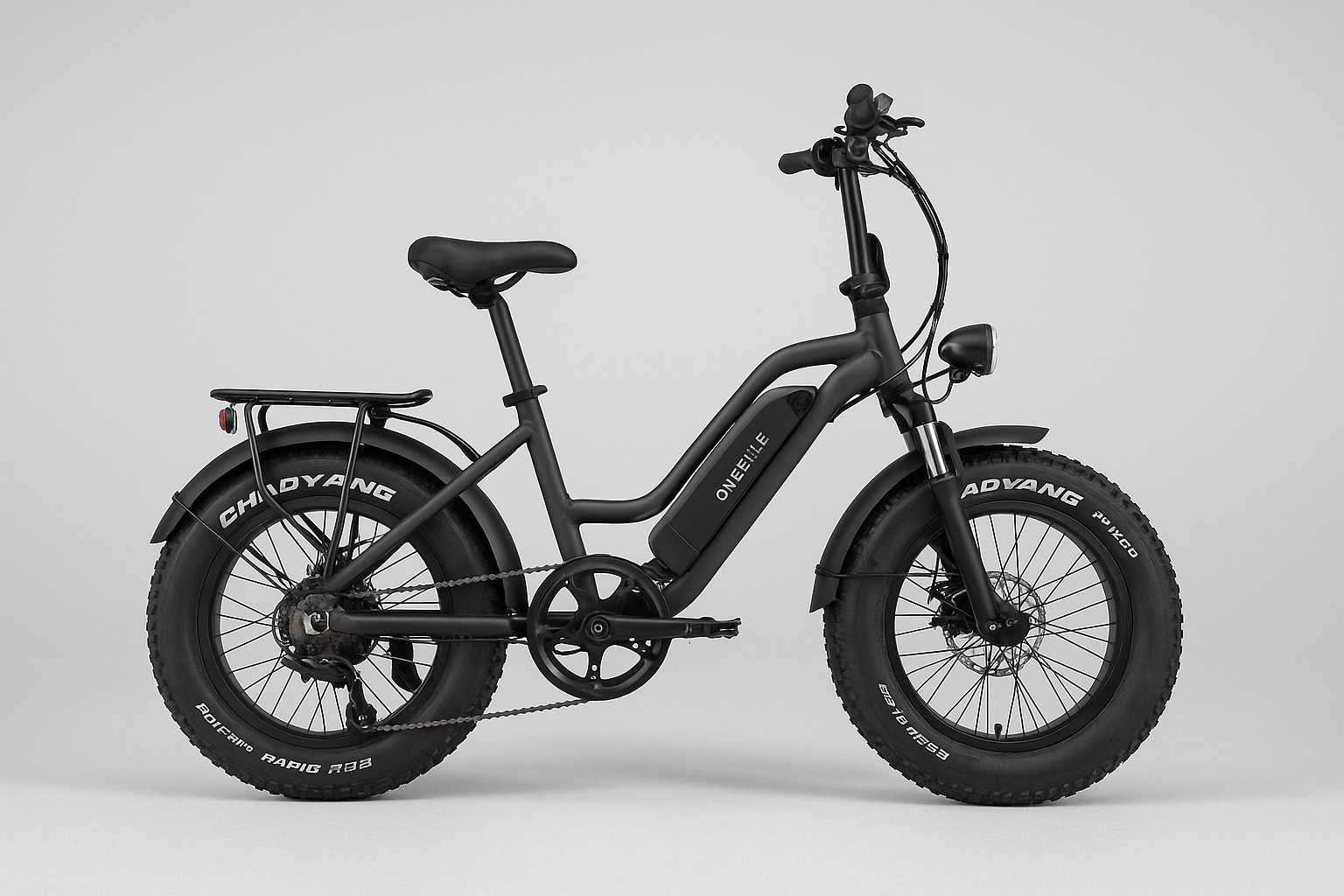3D Logo RotatorAdvanced Color PaletteAdvanced Digital SpeedometerAdvanced E-Bike SimulatorAdvanced Text SeparatorAffiliate Link BuilderAI Icon GeneratorAI Image Prompt GeneratorAI Ride AnalyzerAliExpress Link ExtractorArticle Idea GeneratorArticle Skeleton GeneratorBattery CalculatorBattery Cell ConfiguratorBattery Lifespan CalculatorCharging Time CalculatorCarbon Offset CalculatorColoring BookCommunity E-Bike RoutesCompassCompare E-Bikes & E-ScootersCompare Motors and ControllersContent Readability CheckerCustom E-Bike Firmware BuilderCustom E-Bike Price CalculatorCurrency ConverterDark Mode Theme BuilderE-Bike Consumption CalculatorE-Bike Cost of OwnershipE-Bike DashboardE-Bike Maintenance PlannerE-Bike Motor Power EstimatorE‑Bike Noise AnalyzerE-Bike Range CalculatorE-Bike Riding CoachE-Bike Smart AlertsE-Mobility Trend RadarElectricity Source Impact ToolEnergy Consumption & Range CalculatorE-Scooter Battery Health CheckerE‑Waste Impact VisualizerFont Pairing ToolFree Logo MakerGradient Palette GeneratorGreen CalculatorHeadline AnalyzerHeading Structure AnalyzerHTML Tag ExplorerImpact CalculatorImport Tax and Fees CalculatorInteractive GlobeKeyword Density AnalyzerLogo Editor ProMarkdown to HTML ConverterMeta Description Length CheckerProduct Code GeneratorProduct GeneratorRide Efficiency Tracker GPSSEO CheckerSEO Keyword GeneratorSmart Route PlannerText Counter ToolText Search & Highlight Tool — EmbedText to Speech PlayerTire Pressure AdvisorTitle Length CheckerURL Slug Optimizer
1000W Electric Bike20252025 Top Gear250W Electric Bike48V E-Scooters500W Electric Bike72V E-ScooterAge & Licensing RequirementsAI in TransportationAll-Terrain E-MobilityApps & TuningBest RoutesBudget E-BikesChoosing an E-BikeCity RidingCity Riding GuidesCleaning & CareCommuter GearCommuter TechCommuter TipsCommutingCommuting & LifestyleCommuting by E-ScooterCommuting TipsCompact CarsComparisonsCompliance TipsControllersCulture & CommunityDualtronE ScooterE Scooter Suspension SystemsE-bikeE-Bike & E-Scooter PicksE-Bike & Scooter TechnologyE-bike AccessoriesE-Bike AI and Smart SensorsE-Bike BatteriesE-Bike Battery LifeE-Bike Buying GuidesE-bike ChargerE-bike ChargersE-Bike Classes & DefinitionsE-Bike CommutingE-Bike ComparisonE-Bike ComponentsE-bike ControllerE-Bike ErgonomicsE-Bike EtiquetteE-Bike GearE-Bike GuidesE-Bike Health & WellnessE-Bike IndustryE-Bike InnovationE-Bike InnovationE-Bike Laws by StateE-Bike LifestyleE-bike MaintenanceE-bike PartsE-Bike PartsE-Bike Performance & SetupE-Bike RegulationsE-Bike ReviewsE-Bike SafetyE-Bike SecurityE-Bike Smart TechE-Bike Storage SolutionsE-Bike SustainabilityE-Bike TechnologyE-Bike Theft PreventionE-Bike TipsE-Bike TiresE-bike TrendsE-Bike TypesE-Bike Use CasesE-Bikes for BeginnersE-CarsE-Mobility BrandsE-Mobility GuidesE-Mobility TrendsE-Mountain BikesE-Scooter Brake PadsE-Scooter BrakesE-Scooter ChargerE-Scooter ChargersE-Scooter ComponentsE-Scooter CultureE-Scooter EtiquetteE-Scooter GuidesE-Scooter Laws & RegulationsE-scooter Laws & RegulationsE-Scooter LifestyleE-Scooter MaintenanceE-Scooter PartsE-Scooter ReviewsE-Scooter SafetyE-Scooter SpeedE-Scooter SuspensionE-Scooter TechnologyE-Scooter TipsE-Scooter UpgradesE-Scooters Buying GuidesEco-Friendly CommutingEco-Friendly E-BikingElectric Bike GuidesElectric MobilityEV Future TrendsEV OwnershipExtreme E-ScootersFastest E-ScootersFat Tire E-BikeFat Tire E-BikesFat-Tire E-BikesFuture of TransportationFuture of WorkFuture TechGig EconomyGovernment & PolicyGreen EconomyGreen MobilityGreen Tech & SustainabilityGreen TechnologyHealth & PerformanceHealth & WellnessHelmet & Safety GearHigh-End ModelsHigh-Performance E-ScooterHigh‑Power E-MobilityHoverboardHoverboard AccessoriesHoverboard Buyer GuidesHoverboard Cleaning TipsHoverboard Guides & TutorialsHoverboard MaintenanceHoverboard PerformanceHoverboard Safety & RegulationsHoverboard Storage & Battery TipsImport GuidesInnovation in E-MobilityInnovation in MicromobilityInnovationsInternational ModelsInternational ShippingLaws & RegulationsLegal & SafetyMental HealthMicromobility PicksMotorsNamiNami KlimaOutdoor ActivitiesPerfect Electric BikePerformance & MaintenancePersonal Electric VehiclesPersonal ImportingPersonal MobilityPersonal MobilityPersonal TransportPowerful E-BikesPremium PicksProduct ReviewsPsychology & BenefitsPuncture-Resistant E-Bike TiresPuncture-Resistant GearRide ReliabilityRoad & Trail AccessRoutes & TrailsSafety & RegulationsSafety TipsShopping GuidesSmart DevicesSmart Urban TransportSolar TechnologySolar-Charging E-BikesSpecs & ReviewsSpeed & Power LimitsStoriesSustainable CommutingSustainable MobilitySustainable TransportationSustainable TransportationTech ExplainedTechnology & GadgetsTeverunTeverun Blade MiniThe Silent PollutionTire ReviewsTop E-bikeU.S. IncentivesU.S. InfrastructureU.S. Market TrendsU.S. Policy & TrendsU.S. RegulationsUrban CommutingUrban E-BikesUrban MobilityUrban MobilityUrban TransportationUSA LawsWeather AffectsWeather ProtectionWorld's Most
$200 e-bike100 mph e-scooter1000 watt e-bike 20251000W e-bike1000W electric bike2-seater EVs2025 ebike rules2025 electric scooter ranking250W electric bike48V charger500W electric bike52V batteryadaptive navigationadjustable suspensionadrenaline scooter ridesadvanced electric mobilityadvanced hoverboard featuresaffordable commuting ebikeAffordable E-Bikesaffordable e-mobilityaffordable ebikes 2025affordable electric bikesaffordable electric scootersafter-sales supportage limit e-bikeAI electric bikesAI hoverboardsAI in e-bikesairless bike tiresairless tiresAliExpress e-bikealiExpress scooter partsall-terrain electric bikesAmerican E-Bike Preferencesanti-puncture bicycle tiresanti-theft technologyApollo GoApollo scootersare e-scooters legalAuksmart C1Aventon Level 3avoiding ebike accidentsbattery bikes timelinebattery capacityBattery Certificationbattery charging tipsbattery compatibilitybattery disposalbattery maintenancebattery monitoringbattery rangebattery safety for e-bikesbattery shipping rulesBattery Storage Tipsbattery technology advancementsbattery typesbattery types for electric vehiclesbattery upgrade for e-bikebeach e-bikesbeginner budget ebikebeginner ebike safetybeginner electric bikebeginner hoverboard tipsbest affordable ebike toolsbest battery for electric scootersbest battery practicesbest budget electric bikesbest cheap ebikes 2025best commuter ebikebest commuter tiresbest compact electric scooterbest e-bike 2025best e-bike tiresbest e-bikes for trailsBest E-Bikes USAbest e-MTB 2025best e-scooter 2025best e-scooter brandsbest e-scooter for commutingbest e-scooter modsbest ebike for heavy ridersbest ebike for your needsbest ebike routesbest ebike tires 2025best ebike upgradesbest electric commuter vehiclebest electric scooters 2025best fat tire e-bike 2025best fat tire e-bikes 2025best high speed scootersbest hoverboards 2025best racing electric scootersbest scooter for all weatherbest scooter routes NYCbest scooter suspensionbest starter e-bikesbest value electric bikesbike buying advicebike commuting citiesbike fitting tipsBike Infrastructure USAbike mechanicsbike mirrorsBike ParkingBike Rebate USABike ShedBike Storage IdeasBike Storage SolutionsBike Theftbike theft preventionBike-Friendly CitiesBiktrix Juggernautbiohackingbiometric lockBlade Mini specsbluetooth e-scooter appsBluetooth hoverboardBluetooth speaker hoverboardBMS in hoverboardsBontrager H2Brain and Moodbrain healthbrake inspectionbrake noise in scootersbrake pad pollutionbrake pad wear signsbrake pads for Xiaomi scooterBrompton electric bikebudget e-bike buildbudget e-bikes under $1000budget ebike 2025budget ebike accessoriesbudget electric bikesbudget friendly ebike optionsbuying guideCanyon Endurance ONflyCarbon Footprint Reductioncargo e-bikescharger compatibilitycheap e-bike recommendationscheap electric bike gearChinese ebike importchoosing the right ebikecity and off-road ebikecity bike lanescity commuter ebikecity commuting scootercity e-bike 500Wcity e-bikes for beginnerscity e-scooter for adultscity ebike tipscity ebike tirescity ebikescity riding legal tipscity scooter rulescity scooter suspensionclass 1 class 2 class 3 e-bikesClean Citiesclean electric scooterClean Energycognitive benefitscold weather battery lossComfort and Terraincommuter bike tiresCommuter E-Bikescommuter electric bikesCommuter Wellnesscommutingcommuting optionscommuting tipscommuting with ebikecompact electric carscompact urban e-bikeconnected e-bikesContinental Gatorskincontroller compatibilitycost effective ebikesCSC FT1000MDcustoms feescycling helmetcycling infrastructurecycling posturecycling therapydaily commuting ebikedaily e-scooter ridersdaily use electric bikeDelivery Appsdelivery ridersdisc brake maintenanceDIY electric bikeDIY EV importDoorDashDopamine and Cyclingdopamine releasedual motor e-scooterdual motor electric scooterdual motor scooterdual motor scootersdual suspensionDualtronDualtron scootersDualtron ThunderDualtron XDualtron X2durable bike tiresdurable electric bike tiresE-Bike Accidentse-bike adoption USE-Bike Battery SafetyE-Bike BenefitsE-Bike Buying Guidee-bike charging speede-bike confidencee-bike customizationE-Bike Deliverye-bike end-of-lifee-bike ergonomicse-bike evolutione-bike fitnesse-bike for snowe-bike helmet lawse-bike historyE-Bike InfrastructureE-Bike Insurancee-bike jobse-bike laws EuropeE-Bike Laws USAE-Bike LifestyleE-Bike Lockinge-bike mental healthe-bike mistakese-bike protectionE-Bike PsychologyE-Bike Racke-bike rangee-bike recommendations 2025e-bike recyclinge-bike regulationse-bike ridingE-Bike Safetye-bike sales 2025E-Bike Securitye-bike service scheduleE-Bike Shops USAe-bike solar charginge-bike specsE-Bike StorageE-Bike Tax Credite-bike technologye-bike thefte-bike tipse-bike tire comparisone-bike tire recommendationsE-Bike Trends 2025e-bike vs e-scooterE-Bikese-bikes USAE-Lah bikee-mobility charging tipse-scooter battery comparisone-scooter battery lifee-scooter brake padse-scooter brake replacement guidee-scooter cleaninge-scooter commute Manhattane-scooter commutinge-scooter comparisone-scooter culturee-scooter customizatione-scooter DIY repairse-scooter dos and don'tse-scooter enthusiastse-scooter helmet requirementse-scooter insurancee-scooter lawse-scooter maintenancee-scooter maintenance checkliste-scooter performancee-scooter pros and conse-scooter riderse-scooter safetye-scooter specse-scooter stopping distancee-scooter suspension systemse-scooter suspension typese-scooter upgradese-waste managementearly electric bikeseasy to ride electric bikesebike 55 km/hebike accessoriesebike AI integrationebike battery chargerebike battery guideebike battery lifespanebike battery maintenanceebike battery rangeebike battery tipsebike brake inspectionebike brakesebike care tipsebike chain careebike chargerebike city toursebike cleaning guideebike comfort upgradesebike comparison 250W vs 500Webike componentsebike controllerebike dealsebike displayebike featuresebike for beginnersebike for delivery ridersebike for heavy ridersebike for hillsebike for short distancesebike helmet rulesebike hornebike lightsebike lights and reflectorsebike maintenanceebike maintenance toolsebike motor innovationebike motor maintenanceebike motor optionsebike paths in citiesebike power managementebike repair vs scooter repairebike safety checklistebike throttleebike tourismebike trends 2025ebike types explainedebike upgradesebike upgrades under $50ebike with powerebikes under $1000eco friendly ebikeeco friendly transportationeco-friendly carseco-friendly commutingeco-friendly e-bike componentseco-friendly e-bikesEco-Friendly Transporteco-friendly transportation USAEGGKING S8electric bicycle 25km/helectric bicycle for adultselectric bicycle safetyelectric bicycle tire brandselectric bicycleselectric bikeelectric bike 35km/helectric bike accessorieselectric bike advantageselectric bike batteriesElectric Bike Brandselectric bike buying guideelectric bike checklistelectric bike comfortElectric Bike Commutingelectric bike comparisonElectric Bike CouriersElectric Bike Coverageelectric bike economyelectric bike for city streetselectric bike for hillselectric bike for studentselectric bike friendly citieselectric bike maintenanceelectric bike partselectric bike regulationsElectric Bike Retailerselectric bike safetyElectric Bike Safety 2025electric bike securityelectric bike statisticsElectric Bike StorageElectric Bike Subsidyelectric bike success storyelectric bike sustainabilityelectric bike technologyelectric bike travelelectric bike upkeepelectric bike visibility tipselectric bike vs scooterelectric bike wellnessElectric Bikeselectric bikes for healthelectric bikes for trailselectric bikes trendselectric car comparisonElectric city carselectric fat bikeselectric hoverboardelectric mobilityelectric mobility lawselectric mountain bikeelectric mountain bikeselectric scooter appselectric scooter careelectric scooter chargerelectric scooter comfortelectric scooter communityelectric scooter drag raceelectric scooter featureselectric scooter improvementselectric scooter licenseelectric scooter maintenanceelectric scooter NYCelectric scooter overheatingelectric scooter partselectric scooter pros and conselectric scooter regulationselectric scooter suspensionelectric scooter tipselectric scooter traffic lawselectric scooter upgradeselectric scooter with suspensionelectric scootersEMOVEendorphinsenergy efficient ebikeenergy-efficient commutingENGWE X24enhance scooter safetyentry level e-bikesentry level electric bikesescooter for beginnersEU legal ebikeEU scooter lawsEV Alternativesextend ebike battery lifeextreme electric mobilityextreme electric scootersfast chargerfast electric bicyclefast electric bikefast electric scooter 2025fastest electric scooterfastest electric scootersfastest street legal scootersfat tire 1000Wfat tire bicyclefat tire e-bikesfat tire ebike reviewfat tire ebikesfat tire vs regular e-bikefat tires vs standard tiresFire-Resistant E-Bikefirmware updatefirst electric bike guidefitness and brainflat-free electric bike tiresflat-resistant tiresfoldable e-scooterfoldable scooterfolding mechanism scooterframe recyclingframe sizefront suspensionfuture electric mobilityfuture of e-bikesgig economyglobal e-scooter eventsGPS trackergreen commutinggreen jobsgreen mobilityGreen Transportgreen transportationGunai ebikegyroscope hoverboardHalo Rover Xhand signals for scootershandlebar adjustmenthealth benefits of electric bikesheavy duty bike tireshigh performance e-bikehigh performance e-scooterhigh performance electric scooterhigh torque ebikehigh-end e-bikeshigh-end electric scootershigh-performance e-scootershigh-performance scootershigh-power ebikeshigh-speed ebikeHimiway D5hot weather e-scooter tipshoverboard accessorieshoverboard balance systemhoverboard battery safetyhoverboard battery tipshoverboard cleaninghoverboard comparisonhoverboard futurehoverboard guidehoverboard maintenancehoverboard motorshoverboard riskshoverboard safetyhoverboard seat attachmenthoverboard sensorshoverboard storagehoverboard stylehoverboard technologyhoverboard tireshoverboard trends 2025hoverboard upgradeshoverboard vs e-scooterhoverboardshow hoverboards workhow to build an electric bikehow to change brake pads e-scooterhow to choose an electric bikehow to clean a scooterhow to maintain an ebikehow to pick an ebikehow to read e-bike specshumidity and corrosion e-scootershydraulic brakes e-scooterhydraulic brakes scooterhydraulic suspensionhyperbike importimport e-scooterimport electric bikeincrease battery rangeincrease e-scooter rangeIndoor Bike Storageintelligent braking systemsinternational ebike travelinternational shipping tipsIP54 e-scooterJackRabbit OG2 ProKaabo USAkevlar bike tireskids hoverboardsLast-Mile LogisticsLast-Mile TransportLectric XP 3.0LED hoverboard lightslegal electric bicyclelegal fast electric bikeLiability Insurancelifepo4 battery advantageslifepo4 vs li-ion rangelightweight dual motor scooterlightweight e-bikelightweight e-bike frameslightweight e-bikes for beginnerslightweight electric vehicleslightweight folding bikelithium battery careLithium Battery Fireslithium battery temperature effectlithium iron phosphate scooterlithium-ion batterylithium-ion battery charginglithium-ion recyclinglithium-ion vs lifepo4long range e-bikelong range ebikelong range electric bikelong range electric scooterlong-lasting e-bike batterylong-range e-bikelong-range scooterslongevity tipslow cost ebikelow power ebikeluxury e-bikesmaintenanceMaxxis Re-FuseMaxxis Re‑Fusemental clarityMental Healthmicro electric vehiclesMicromobilitymicromobility AmericaMicromobility LawsMicromobility Programsmicromobility trendsmid-power electric bicyclemindfulnessMinimotorsminimum e-bike agemobility devicesmobility innovationmood and cyclingmotor powermotor typesmotor wattagemountain ebikesmust-have ebike accessoriesmust-have ebike gearmust-have hoverboard gearNami Burn E2 Max specsNami Burn-E 2 MaxNami electricNami KlimaNami Klima review 2025Nami Klima specsNami Klima top speedneurosciencenew professionsnight riding safetyNYC scooter lawsoff-roadoff-road e-bikesoff-road e-scooteroff-road ebikeoff-road electric bikeoff-road electric scooteroff-road electric scootersoff-road hoverboardoff-road hoverboardsOff-Road vs. City Commuteoptimize ebike performanceorganic brake padsorigin of electric bicyclesOutdoor Bike Storageoutdoor exercisepedal assist ebikeperformance e-bikeperformance e-scootersperformance ebikeperformance tuningpersonal electric transport rulespersonal electric transportationpersonal EV importingpersonal EV tech 2027phone mount for ebikepneumatic tirespowerful commuter scooterpowerful e-scooterpowerful electric bikepowerful electric bikespowerful electric scooterspowerful electric scooters 2025powerful escootersPremium E-Bikespremium e-scooterpremium e-scooters 2025premium electric bikespremium electric scooterspreserve ebike powerprolong ebike lifeProperty Insurancepuncture proof tirespuncture resistant ebike tirespuncture-proof bike tirespuncture-resistant tirespuncture‑resistant ebike tiresracing scootersRadRover 6 Plusreal-time hazard detectionrear suspensionregular ebike checkupride modesride safely NYCrider protectionridersriding defensively with ebikeriding ebike in trafficriding electric scooters in rainriding responsiblyRidStar Q20Riese Müller SuperdeliteRion RE90Rion RE90 reviewrubber suspensionrugged electric bikerugged terrain e-bikesaddle positionsafe bike routesSafe Chargingsafe ebike commutingsafe electric scooter ridingsafe hoverboards 2025safety gearsafety gear for e-bikessand snow ebikesave ebike energyscenic ebike ridesSchwalbe Marathon Plusscooter bluetooth connectionscooter brake safety tipsscooter charging tipsscooter customizationscooter diagnosticsscooter groupsscooter ride comfortscooter ride qualityscooter safetyscooter safety featuresscooter shock absorbersscooter shock absorptionscooter suspension upgradescooter upkeepscooters over $3000Segway NinebotSegway Turbo Vado 4.0Segway ZT3 Proself-balancing scooterself-balancing scooter careself-balancing scooterssensorimotor activationshould I buy an ebike or scootersidewalk e-scooter lawssidewalk riding lawssmart bike featuressmart cars for citiessmart chargersmart commutingsmart ebikessmart electric scooter displaysmart hoverboardsmart hoverboardssmart lockssmart mobility devicessmart scooter displaysmart sensorssnow e-bikessolar charging kitssolar e-bikessolar mobilitysolar scooterssolar-powered electric bikessolid e-bike tiressolid-state batteriesspring suspensionstate-by-state ebike guideStorage Tipsstress reductionstress relief e-bikeStromer ST5student-built e-bikesuspension benefitssuspension comparisonsuspension scooterssuspension system reviewsuspension travelsuspension typessuspension upgradessustainable commutingSustainable Deliverysustainable e-bike partssustainable exerciseSustainable Mobilitysustainable transportationSwagtronswappable battery e-bikesTannus Airlessteen e-bike usetest rideTeverun Blade MiniTeverun Blade Mini reviewTeverun scooter pros and constire microplasticstire pressuretire pressure ebikeTomolootop affordable ebikestop beginner e-bikestop e-bike brandsTop E-Bikes 2025top ebike trailstop rated e-bikestop scooters 2025top speedtop speed electric scootertop speed escootersTop U.S. Citiestorque sensor vs cadencetouring ebike tirestraffic laws for ebikesTrek Rail 9.9tubeless ebike tiresU.S. Bike RegulationsU.S. E-Bike IncentivesU.S. e-bike marketU.S. E-Bike RegulationsUber EatsUK e-scooter legal statusUL 2272 certificationUL 2849UL certified chargerultra fast scootersultra high speed e-scootersupgrade scooter batteryurban commuter e-bikeurban commutingurban commuting electric bikesUrban Cyclingurban cycling routesurban cycling safetyUrban Cycling Storageurban e-bike 2025urban e-scooter etiquetteurban electric bikeUrban Electric Bikesurban electric commutingurban electric mobilityurban electric scooterurban fat tire bikesurban mobilityurban mobility comparisonurban transporturban transportationUS e-bike regulationsUS e-scooter rulesV2X communicationVelotric Fold 1 Pluswarrantywaterproof bagswaterproof e-scooterwaterproof ebike bagwaterproof electric scooterwaterproof electric scootersweather impact on electric scooterswellness commutingWeped SSTWeped SST top speedwhen to replace scooter brakesWhere to Buy E-Bikeswide tire electric bikesWide Tireswinter e-scooter maintenancewireless ebike controlswomen in e-mobility




